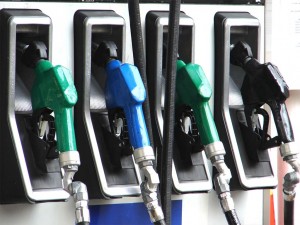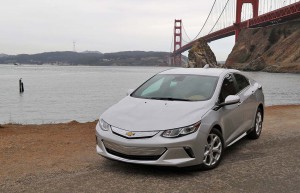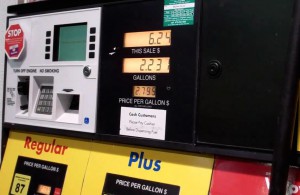If you’re occasionally babying your car by filling the tank up with premium-grade gas, you might want to think twice about throwing away good money.
A new study by AAA confirms that if your car runs on regular, that’s all you need. Filling up with a higher octane fuel doesn’t improve performance, mileage or emissions. It just wastes about $2.1 billion annually.
“Many drivers think they are giving their car a treat by occasionally filling up with premium-grade gasoline, even though their vehicle calls for regular unleaded,” said Gary Bubar, an official with AAA – The Auto Club Group. “The consensus has been that higher octane does not mean higher quality.”
(Pipeline rupture causing fuel shortages in some parts of the U.S. Click Here for the latest.)
AAA decided to put that to the test by evaluating whether there was any difference in the operation of a variety of different four, six and eight-cylinder engines using both regular and premium fuel. To ensure accuracy, it used a dynamometer, essentially an automotive treadmill, at the research center operated by the Automobile Club of Southern California.
The organization had good reason to wonder. The vast majority – about 70% — of today’s cars are designed to run on regular gasoline. But a national survey found that 16.5 million U.S. drivers used premium fuel at least once during the past year. That boosted their collective spending by more than $2.1 billion.
Was it worth it? Energy companies take pains to promote their higher-grade gasolines, often suggesting that cars using those more expensive blends will deliver better performance, improved mileage and reduced emissions.
But that simply wasn’t the case, said the AAA. “For vehicles designed to run on regular-grade fuel, using premium gasoline did not produce more horsepower, result in better fuel economy or produce fewer tailpipe emissions,” it said. “Premium gasoline is specifically formulated to be compatible with specific types of engine designs and most vehicles cannot take advantage of the higher octane rating.”
If anything, numerous studies have shown that many vehicles designed to run on premium fuel can also operate on less expensive blends. In some cases, an owner can switch to a mid-grade or even regular, though that likely will result in lower horsepower and reduced mileage. As long as the vehicle is designed to run on multiple grades, meanwhile, emissions shouldn’t be impacted.
Drivers can ascertain what gasoline is best – and possibly save money in the process — simply by checking the owner’s manual.
(Gas prices fall as summer driving season ends. For more, Click Here.)
According to AAA, 70% of today’s cars run on regular, 16% on premium, and 10% on mid-grade gasoline. About 4% use alternative energy sources, such as propane, ethanol or electricity.
There are ways to improve the performance of a vehicle by choosing the right gas, noted Bubar. “Drivers looking to upgrade to a higher quality fuel for their vehicle should save their money and select a TOP TIER gasoline, not a higher-octane one.”
That’s a designation applied to fuels that meet specific standards when it comes to the addition of detergents. Since 1996, federal rules have required gasoline refiners to add engine-cleaning additives. While some meet the minimum standards, others use additional detergents and other chemicals designed to prevent deposits and keep engines running smoothly.
Reformulated fuels can make a big difference, according to research conducted by Michigan State University. Better blends can cut internal friction, especially in cylinders and piston rings, by as much as half, according to MSU mechanical engineering professor Harold Schock.
Gasoline blends that carry the TOP TIER rating may cost a few cents more than other fuels, but they can pay off in the long run. According to a separate study by AAA, lower-quality fuel can leave as much as 19 times more deposits on engine intake valves after just 4,000 miles of driving.
“Fortunately, consumers can reverse some engine deposits simply by switching gasoline brands,” said Greg Brannon, AAA’s director of Automotive Engineering. “After a few thousand miles with TOP TIER gasoline, performance issues like rough idling or hesitation during acceleration can often be resolved.”
Using fuels that meet this standard is a much more effective way to baby your car, according to AAA, and costs a lot less than going with premium.
(Not all gasolines are up to standard. Click Here for find out how to pick the right one.)




No kidding. Premium fuel has no more available energy and doesn’t burn at a higher temperature to “burn out the gunk”, when compared lower grades of gasoline. The higher the octane, the harder the fuel is to ignite (the point being to avoid pre-ignition in higher compression engines), but it has zero impact on the total available energy.
Going with higher-quality fuel, with better detergents, can help, but be aware that in some areas, all the gasoline comes from a single refinery, no matter whose sign is out front. So going to a Chevron station vs. some local chain may mean nothing if their fuel comes out of the same delivery truck.
While you are correct that in some locations aal gasoline is produced at one refinery. However the additive package is added into the tanker when the gas is loaded.